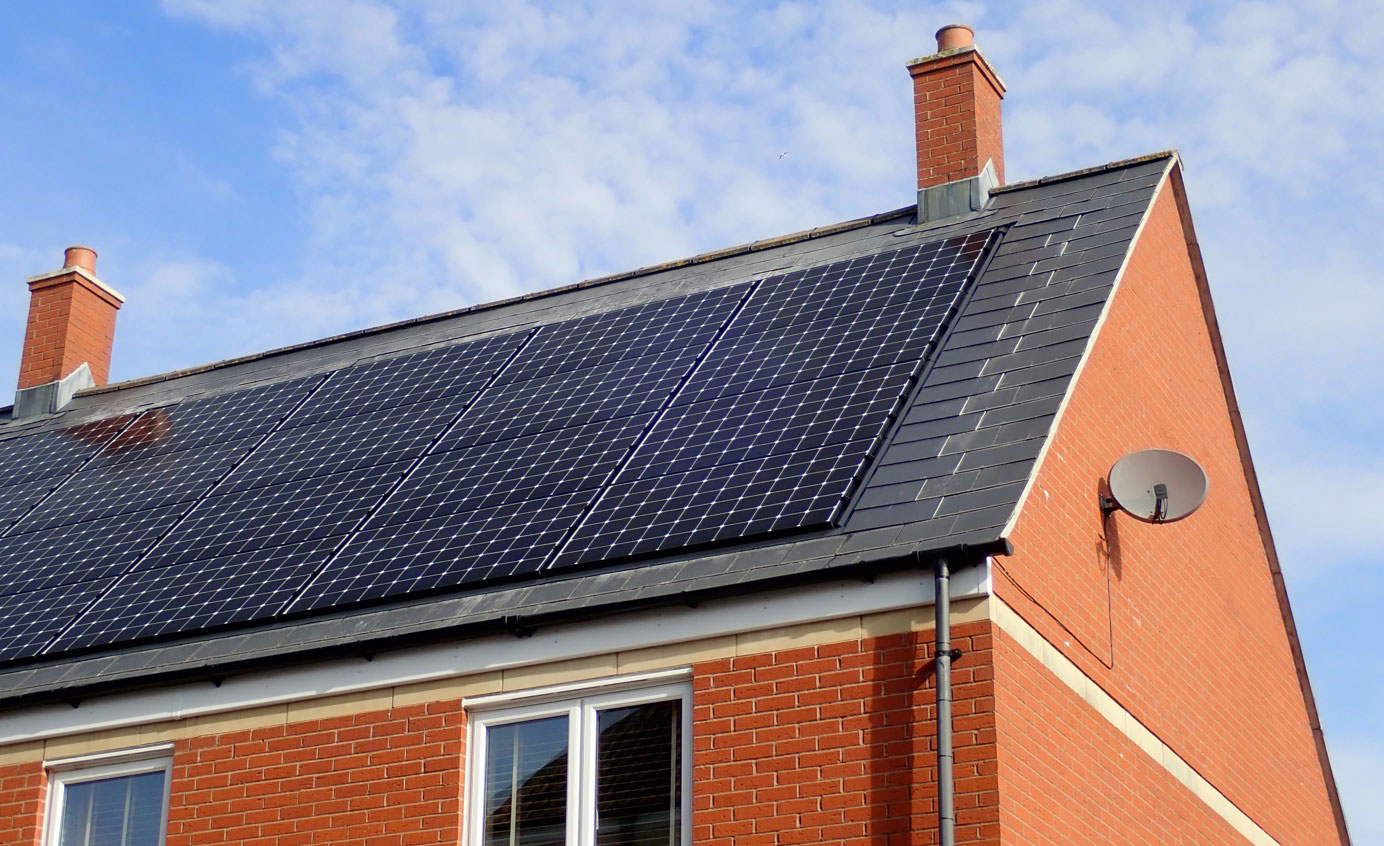Solar Energy Storage – A Comprehensive Guide
In the dynamic landscape of renewable energy, solar power has emerged as a leading contender in the race to transition to sustainable energy sources. However, harnessing the power of the sun comes with its own set of challenges, particularly when it comes to energy storage. The ability to store excess energy generated by solar panels is a critical factor in realizing the full potential of solar power systems. This comprehensive guide delves into the world of solar energy storage, exploring the mechanisms behind solar battery systems and their role in shaping a more reliable and efficient energy future.
How Solar Battery Systems Work
One of the key challenges of solar energy lies in its intermittency – the sun doesn’t shine 24/7. Solar battery systems offer a solution by storing surplus energy generated during sunny periods for use when the sun isn’t shining. This elegant technology essentially bridges the gap between energy production and consumption, ensuring a continuous power supply even when the sun sets or during cloudy days.
At the heart of solar battery systems are the batteries themselves. These batteries, often lithium-ion or other advanced technologies, are designed to store electrical energy in the form of chemical reactions. When solar panels generate more electricity than the immediate demand, the excess power is directed to the batteries, where it’s converted and stored for later use.
Solar battery systems are typically integrated into the existing solar power setup. They are connected to the solar panels, the inverter (which converts DC to AC), and the main electrical grid. During peak sunlight hours, when solar panels produce more electricity than needed, the excess energy is diverted to charge the batteries. Once the batteries are fully charged, any additional surplus can be sent back to the grid if the system is grid-connected.
When the sun goes down or the demand for electricity increases, the stored energy from the batteries is utilized to power homes or businesses. The inverter converts the DC power stored in the batteries back into AC power, which can be used to run appliances, lights, and other electrical devices.
Solar battery systems also offer the advantage of backup power during grid outages. In cases where the main grid fails, the stored energy in the batteries can be tapped into to keep critical appliances running and maintain essential services. This added layer of resilience is particularly valuable in areas prone to power disruptions.
Benefits of Solar Energy Storage
As the world continues to shift towards cleaner and more sustainable energy sources, solar power has become a prominent player in the renewable energy arena. However, the intermittent nature of solar energy production presents a challenge in maintaining a consistent power supply. This is where solar energy storage comes into play, offering a range of benefits that go beyond simply bridging the gap between energy production and consumption.
One of the primary advantages of solar energy storage is enhanced energy self-sufficiency. Traditional solar power systems without storage capabilities are dependent on the real-time availability of sunlight. This means that excess energy generated during sunny periods may be wasted if it’s not immediately consumed or fed back into the grid. With solar battery systems, this excess energy can be stored for later use, allowing homeowners to maximize their self-consumption and reduce reliance on external sources of electricity.
Solar battery systems enable homeowners to harness the power of the sun not only when it’s shining but also during peak demand hours. In many regions, electricity demand is highest during the evening hours, when people return home from work and engage in various activities that require energy. By storing excess solar energy generated during the day, homeowners can tap into this stored power during peak demand hours, thereby reducing the strain on the grid and avoiding peak electricity rates.
Additionally, solar energy storage offers a level of energy resilience that can be especially valuable in areas prone to power outages or grid failures. During such situations, homeowners with solar battery systems can continue to power essential appliances and devices, maintaining a certain level of comfort and functionality even when the grid is down. This capability not only provides peace of mind but also contributes to increased energy security.
Furthermore, solar energy storage can have financial benefits for homeowners. By reducing dependence on the grid and utilizing stored solar energy during peak demand hours, homeowners can significantly lower their electricity bills. They can also take advantage of time-of-use (TOU) pricing structures, where electricity rates are higher during peak hours and lower during off-peak hours. Solar battery systems enable homeowners to draw on stored energy during peak hours when electricity rates are higher, resulting in cost savings over time.
In regions with net metering policies, solar energy storage can also enhance the economic viability of solar power systems. Excess energy generated by solar panels can be stored in batteries and used later, reducing the need to export surplus energy back to the grid. This can lead to a more efficient use of generated energy and potentially increase the financial returns on the initial investment in solar panels and batteries.
In conclusion, solar energy storage offers a multitude of benefits that extend beyond basic energy storage. From enhancing energy self-sufficiency to providing backup power during outages, these systems empower homeowners to make the most of their solar investments. By storing excess energy and using it during peak demand hours, homeowners can lower their electricity bills, reduce their carbon footprint, and contribute to a more resilient and sustainable energy future. As technology continues to advance and solar battery systems become more accessible, the benefits of solar energy storage are poised to play a crucial role in shaping the energy landscape of tomorrow.
Backup Power in Outages
One of the most compelling advantages of solar energy storage systems is their ability to provide backup power during grid outages. Traditional grid-dependent electricity sources are susceptible to disruptions caused by severe weather events, maintenance issues, or other unforeseen circumstances. During such instances, homes and businesses can be left without power for extended periods, leading to inconvenience and potential safety concerns. Solar battery systems offer a practical and reliable solution to address these challenges by providing a seamless source of backup power when the grid goes down.
When a solar battery system is integrated into a solar power setup, it creates a microgrid within the property. This microgrid operates independently from the main utility grid and can automatically switch to battery power when the grid experiences an outage. This means that even when the external power supply is disrupted, essential appliances and devices connected to the solar battery system can continue to function, maintaining a certain level of comfort and functionality for homeowners.
During normal operation, solar battery systems store excess solar energy generated during sunny periods. This stored energy can be used to power the home during the evening hours or when sunlight is limited. However, when a grid outage occurs, the solar battery system’s inverter is programmed to detect the disruption and seamlessly transition the power supply to the stored energy within the batteries. This rapid response ensures that critical appliances like refrigerators, lights, medical equipment, and communication devices remain operational, minimizing disruptions to daily life.
The capacity of solar battery systems to provide backup power during outages varies depending on factors such as the size of the battery storage, the energy consumption of the household, and the efficiency of the system. While smaller battery systems may be sufficient to power essential devices for a few hours, larger systems can provide backup power for extended periods, allowing homeowners to ride out longer outages without relying on the grid.
Solar energy resilience becomes particularly valuable in regions prone to natural disasters such as hurricanes, earthquakes, or wildfires. In the aftermath of such events, power outages are common and can last for days or even weeks. Solar battery systems equipped with backup power capabilities offer a lifeline for affected communities, enabling them to maintain a sense of normalcy and safety during challenging times. They also reduce the strain on emergency response resources, as homeowners can rely on their stored solar energy to meet essential energy needs.
The ability of solar battery systems to provide backup power also contributes to overall energy independence. Homes equipped with these systems become less reliant on external power sources, reducing the impact of grid disruptions on daily life. Furthermore, by relying on stored solar energy during outages, homeowners can avoid the inconvenience of lengthy power restoration times and potential price surges that may accompany grid failures.
Choosing the Right Battery System
Selecting the right battery system is a crucial step in maximizing the benefits of solar energy storage. The decision should be based on various factors, including your energy consumption patterns, budget, and desired level of energy independence. With a wide range of options available in the market, choosing the appropriate battery system requires careful consideration and understanding of your specific requirements.
- Assess Your Energy Needs – Before investing in a solar battery system, it’s essential to evaluate your energy consumption patterns. Take a closer look at your electricity bills to determine your average daily energy usage. Consider peak hours when energy demand is highest, and identify which appliances contribute most significantly to your energy consumption. This analysis will help you estimate the capacity of the battery system required to meet your energy needs during both normal operation and potential outages.
- Understand Battery Capacity – Battery capacity refers to the amount of energy a battery system can store and subsequently deliver. It’s important to select a battery with sufficient capacity to cover your energy requirements during periods of low sunlight or outages. Battery systems are available in various sizes, typically measured in kilowatt-hours (kWh). A higher battery capacity provides more stored energy but may come at a higher cost. It’s crucial to strike a balance between capacity and budget while ensuring that the selected battery can meet your energy demands.
- Consider Depth of Discharge – The depth of discharge (DoD) refers to the percentage of a battery’s total capacity that can be used before it needs recharging. Deeper DoD allows you to use more of the stored energy before recharging, but frequent deep discharges can impact the battery’s lifespan. It’s advisable to choose a battery system with an appropriate DoD based on your energy consumption patterns. If you anticipate frequent outages or extended periods of low sunlight, a battery with a deeper DoD may be suitable.
- Evaluate Efficiency – Battery efficiency determines how effectively energy is stored and retrieved from the battery system. Higher efficiency means less energy loss during charging and discharging, which contributes to maximizing the utilization of stored energy. Efficient battery systems provide more value for the energy stored and can lead to greater savings over the system’s lifetime.
- Consider Longevity – The lifespan of a battery system is an important factor in determining its overall value. Battery longevity is often influenced by factors such as the type of battery chemistry, usage patterns, and maintenance practices. Lithium-ion batteries are commonly used in residential solar energy storage due to their durability, high energy density, and longer cycle life compared to other battery chemistries. It’s advisable to choose a battery system with a lifespan that aligns with your long-term energy goals.
- Budget Considerations – Cost is a significant consideration when choosing a solar battery system. The upfront cost of battery systems can vary based on capacity, brand, and features. While larger battery systems provide more stored energy, they may come at a higher price point. It’s essential to assess your budget and determine a balance between your energy needs and what you can afford. Additionally, factor in potential savings from reduced electricity bills and incentives that may be available in your region.
- Integration with Solar Panels – When selecting a battery system, ensure compatibility with your existing solar panels or the solar panel system you plan to install. The battery system should be compatible with your solar inverter to ensure seamless energy flow between the panels and the batteries.
- Consult with Experts – Navigating the complexities of solar battery systems can be challenging, especially for those new to the technology. It’s advisable to seek guidance from solar energy professionals or consultants who can provide insights based on your specific requirements. They can help you understand different battery options, assess your energy needs accurately, and recommend a battery system that aligns with your goals and budget.
Cost Considerations
Integrating battery storage with solar panels is a significant step toward achieving energy independence and maximizing the benefits of renewable energy. However, it’s essential to consider the cost implications of this integration to make an informed decision that aligns with your budget and energy goals. While the upfront investment may seem substantial, understanding the long-term savings and potential returns can provide a clearer picture of the financial benefits.
The cost of integrating battery storage with solar panels includes several components:
- Solar Panels – If you haven’t already installed solar panels, the initial investment in solar panels is a significant portion of the cost. The number of panels you install will depend on your energy consumption and the capacity of the battery system you plan to integrate.
- Battery System – The battery system’s cost varies based on its capacity, brand, and technology. Larger battery systems with higher capacity generally come with a higher price tag. Lithium-ion batteries are commonly used due to their efficiency and longevity.
- Inverter and Installation – An inverter is required to convert the direct current (DC) generated by solar panels into alternating current (AC) for household use. Some battery systems come with built-in inverters, while others may require a separate inverter. Installation costs cover labour, permits, and any necessary electrical work.
Financial Benefits
While the upfront costs of integrating battery storage with solar panels can be significant, there are several financial benefits over the long term
- Energy Savings – Solar panels generate electricity from the sun, reducing your reliance on grid power and lowering your electricity bills. Excess energy generated during the day can be stored in the battery system for use during the evening or during cloudy periods.
- Time-of-Use Savings – In regions with time-of-use (TOU) pricing, where electricity costs vary based on the time of day, a battery system can help you store energy during off-peak hours when rates are lower and use it during peak hours when rates are higher.
- Grid Independence & Back-Up Power By storing excess solar energy in batteries, you can reduce your dependence on the grid during peak demand hours. This can lead to additional savings and greater control over your energy costs. Also, a battery system can provide reliable backup power during grid outages, ensuring continuous operation of critical appliances and minimizing disruptions.
Return on Investment (ROI):
Calculating the return on investment for integrating battery storage with solar panels involves comparing the total cost of the system with the potential savings over its lifespan. Factors to consider when assessing ROI include Estimating the amount of energy your solar panels will generate and how much you can store in the battery system. Compare this to your current electricity bills to gauge potential savings. You would look at electricity Rates and consider how electricity rates are expected to change over the system’s lifespan. Higher rates can lead to greater savings.
Also, it is important to see if there are any incentives and rebates. Research available incentives, rebates, and tax credits that can offset the initial investment. These incentives vary by location and can significantly impact the overall cost. Finally, Battery Lifespan is important. Evaluate the battery system’s expected lifespan and how it aligns with your financial goals. Longer battery life means more years of potential savings.
As technology advances and the adoption of solar energy and battery storage increases, costs are expected to continue decreasing. Solar panel and battery prices have seen a consistent downward trend over the years, making renewable energy solutions more accessible and cost-effective.
Moving Forward
In conclusion, solar energy storage is a transformative solution that addresses the challenges of intermittency in solar power generation. By efficiently storing excess energy and providing backup power during grid outages, solar battery systems empower homeowners to enhance energy self-sufficiency, reduce reliance on the grid, and achieve substantial cost savings. The financial benefits, including lower electricity bills, potential time-of-use savings, and a positive return on investment, underscore the long-term value of integrating battery storage with solar panels.
As the world pivots towards cleaner and more sustainable energy sources, solar energy storage stands as a beacon of innovation that has the potential to revolutionize energy consumption. By optimizing energy usage patterns and making the most of renewable resources, these systems contribute to a more resilient and decentralized energy landscape. The ability to harness and store solar energy not only provides immediate benefits to homeowners but also contributes to reducing carbon footprints and alleviating pressure on traditional power grids.
Solar battery systems epitomize the convergence of cutting-edge technology and environmental responsibility. They empower individuals to take control of their energy usage, reduce their impact on the environment, and create a more sustainable future for generations to come. As advances in battery technology continue to unfold, the potential for greater efficiency, longer lifespan, and even more affordable solutions holds the promise of transforming the way we power our homes and businesses. By embracing solar energy storage, individuals play a vital role in shaping a world where energy consumption is smarter, greener, and more sustainable.




